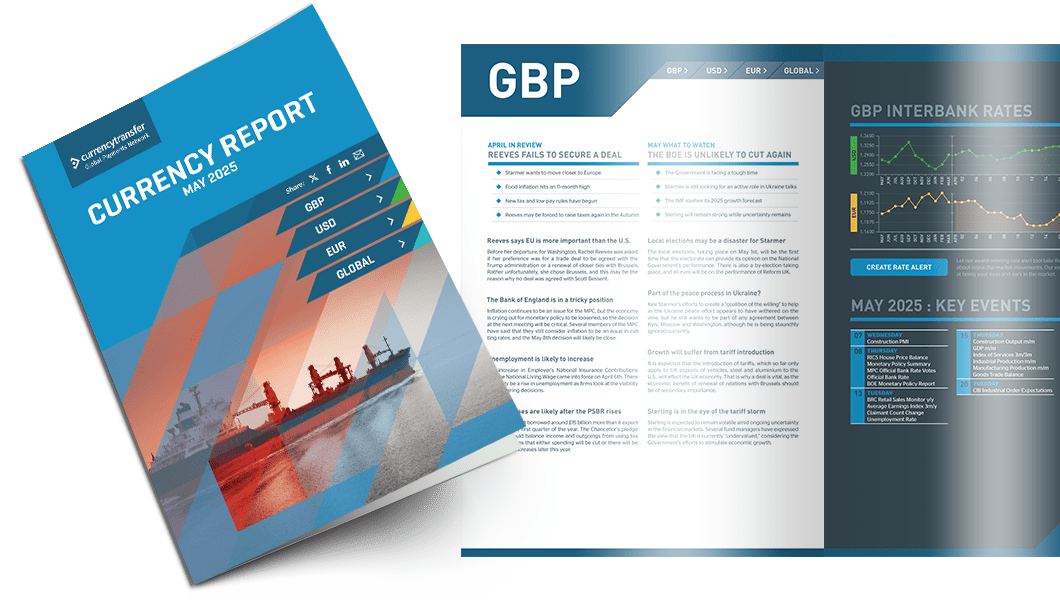
Highlights
- A summer rate cut is still a possibility
- It looks like a soft landing may be on the horizon
- Business activity grows as a rate cut looms
Bailey has a right to be “pretty pleased” with the economy
For this reason, economists consider this entire sector as a provider of a barometer of the entire economy. Undoubtedly, the challenges faced across the housebuilding and wider construction industry over the last few years have been particularly acute.
A combination of planning and Covid delays, inflationary cost increases for material and labour, rising cost of living and high mortgage interest rates all contributed to a negative ripple effect across the sector.
However, there have been real shoots of recovery in the last few months. Just a few weeks ago the inflation rate returned to something that we recognise as ‘normal’ and just above the Bank of England target. It brings a higher likelihood of interest rate cuts by the end of the summer and more affordable mortgages. More homebuilders are also reporting improved sales across the South East and more importantly, the entire country.
This provides the basis for a continued recovery in the economy, which will be accelerated by the eventual cut in interest rates.
Andrew Bailey has been much maligned since he took over from Mark Carney as Governor of the Bank of England.
In contrast to Carney’s “smooth passage” Bailey has seen several “storms”, including the pandemic, rising inflation and an economy that has teetered on the edge of recession for almost two years.
To have held his nerve and got his priorities right, over such a difficult period, is a credit to him. He has not always been best served by members of the MPC being willing to provide sound bites to the media that run contrary to the Committee’s overall view.
A cut in interest rates has been pushed back given the “stickiness” of inflation recently. This has been a far more difficult decision for Bailey than Jerome Powell since the UK is not growing at a similar rate to the U.S.
The Next MPC meeting will take place two weeks from today, and although no change in monetary policy is expected, it is hoped that Bailey will provide further advance guidance about the direction of interest rates.
Rishi Sunak was strident in his view that a Labour Government would cost every working family two thousand pounds when the two main Party Leaders clashed in the first televised debate on Tuesday evening.
Sir Keir Starmer appeared to have no answer but to deny Sunak’s tirade, but in the “cold light of day” his team have been hard at work trying to refute the claim. Several comments were made about the efficacy of Sunak’s claim, and it remains to be seen if the claim itself or the vociferous denials stay in voters’ minds.
The pound has been fairly volatile within its current range against the dollar this week. Yesterday, it recovered to a high of 1.2795, closing at 1.2793.
The Euro has seen even more volatility as the market awaits today’s interest rate decision from the ECB. Sterling fell to a low of 1.1748 yesterday and closed at 1.1751.

Read our latest currency report
Most impactful events planned this month and how they could impact your business
Manufacturing and service are both well in “positive territory”
This has relieved the perceived pressure on the FOMC to cut interest rates sooner than it wants to.
There have been continued rumblings recently that the economy is beginning to stagnate. GDP was lower in the first quarter than in the final two quarters of 2023, but that has been put down to the effect of interest rates staying “higher for longer”.
The data that has been published so far relating to the second quarter has remained positive, and some slowing is only to be expected given the current level of interest rates.
At the start of the year, it was expected that the first cut in the Fed Funds rate would have taken place already, but the path of inflation has not been following the Fed’s predictions since the economy has been performing adequately, Jerome Powell and his colleagues can afford to be data-driven.
Data for private sector job creation was released yesterday. Although this often bears no relation to the overall non-farm payrolls that will be delivered tomorrow, there is some significance to the data, which saw a fall from 188k in April to 152k in May.
The fruitless task of predicting the headline number for the NFP has thrown up a number of 185k for May, which is a 10k increase over April.
If the ECB follows its advance guidance and cuts interest rates by twenty-five basis points later this morning and the data points to a further delay from the FOMC, the dollar should see a significant rally towards the end of the week.
For once, the ECB is likely to prove more dependable than the U.S. data, so a rise in volatility over the next thirty-six hours is likely.
Yesterday, the dollar index fell to the lower end of its recent range, reaching a low of 104.05 and closing at 104.10.
Following the end of the ECB meeting, which will mark the beginning of the divergence of monetary policy between the Eurozone and the U.S., the comments made by Central Banks will be of greater relevance to the direction of monetary policy.
It’s been a long time coming, but the ECB is going to support the economy
The easy part will be the announcement of a twenty-five-basis point cut in short-term interest rates, lowering the rate from an all-time high level. She will then be faced with offering sufficient advance guidance to the market to satisfy all interested parties.
Several of her colleagues will want he to remain hawkish, not providing even the slightest hint about when the next cut will take place, while the doves on the Governing Council and the wider audience of market commentators and economists “demand” that she is more open about the thinking that has led the ECB to perform a single cut in isolation.
Lagarde may well point to the stubbornness of inflation which appears to have bottomed out, rising marginally in May, or the continued elevated level of wage settlements which saw wages grow by a record amount in Germany last month.
What she won’t want is to be accused of “talking herself” into a rate cut, which when considered in light of the recent data releases is not justified.
Although Lagarde’s speech will be highly significant, the comments made by her colleagues, particularly the most hawkish, like Isabel Schnabel, Robert Holzmann, and Martins Kazaks will set the tone for at least the next quarter.
They will want to ensure that the ECB remains committed to defeating inflation, while not portraying that they have “given in” to the doves. Ironically, the ECB has decided to cut rates when those who had been “braying” for a cut earlier, represent those whose economies are performing well.
The rate cut comes as business activity appears to be beginning to pick up across the entire region. There was a fear that the Eurozone was beginning to develop a two-paced recovery.
This would have added to the dilemma facing the ECB going forward, but with the Composite PMI for May showing that it is well into positive territory, pressure for further cuts to avoid a recession has faded to nothing.
The euro has been in a narrow range this week, with only commercial interest driving the market.
Yesterday, it rallied to the high of its recent range but did not challenge the resistance at 1.0920. It reached a high of 1.0895 and closed at 1.0889.
Have a great day!

Exchange rate movements:
05 Jun - 06 Jun 2024
Click on a currency pair to set up a rate alert
Alan Hill
Alan has been involved in the FX market for more than 25 years and brings a wealth of experience to his content. His knowledge has been gained while trading through some of the most volatile periods of recent history. His commentary relies on an understanding of past events and how they will affect future market performance.